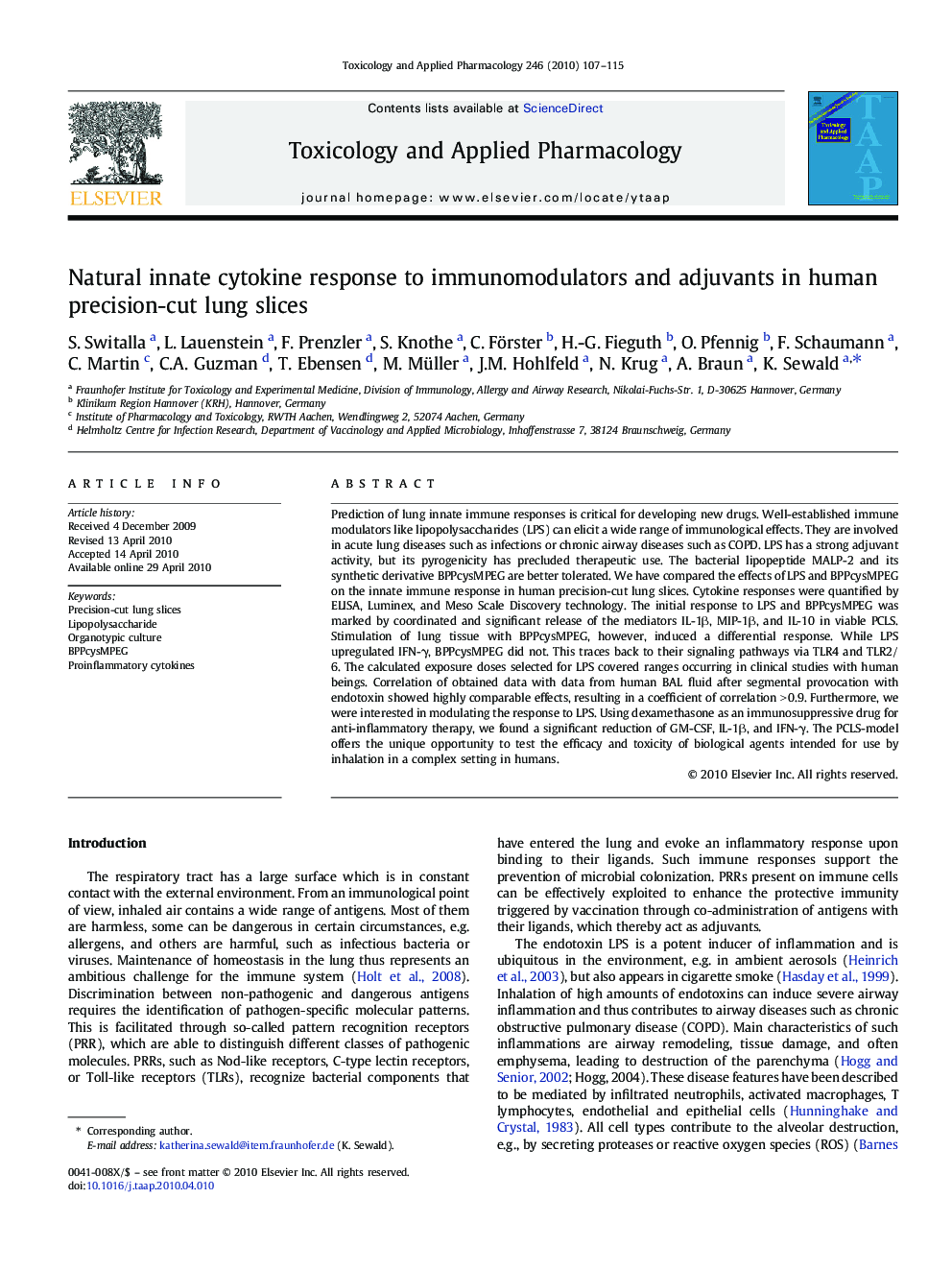| Article ID | Journal | Published Year | Pages | File Type |
|---|---|---|---|---|
| 2569820 | Toxicology and Applied Pharmacology | 2010 | 9 Pages |
Prediction of lung innate immune responses is critical for developing new drugs. Well-established immune modulators like lipopolysaccharides (LPS) can elicit a wide range of immunological effects. They are involved in acute lung diseases such as infections or chronic airway diseases such as COPD. LPS has a strong adjuvant activity, but its pyrogenicity has precluded therapeutic use. The bacterial lipopeptide MALP-2 and its synthetic derivative BPPcysMPEG are better tolerated. We have compared the effects of LPS and BPPcysMPEG on the innate immune response in human precision-cut lung slices. Cytokine responses were quantified by ELISA, Luminex, and Meso Scale Discovery technology. The initial response to LPS and BPPcysMPEG was marked by coordinated and significant release of the mediators IL-1β, MIP-1β, and IL-10 in viable PCLS. Stimulation of lung tissue with BPPcysMPEG, however, induced a differential response. While LPS upregulated IFN-γ, BPPcysMPEG did not. This traces back to their signaling pathways via TLR4 and TLR2/6. The calculated exposure doses selected for LPS covered ranges occurring in clinical studies with human beings. Correlation of obtained data with data from human BAL fluid after segmental provocation with endotoxin showed highly comparable effects, resulting in a coefficient of correlation > 0.9. Furthermore, we were interested in modulating the response to LPS. Using dexamethasone as an immunosuppressive drug for anti-inflammatory therapy, we found a significant reduction of GM-CSF, IL-1β, and IFN-γ. The PCLS-model offers the unique opportunity to test the efficacy and toxicity of biological agents intended for use by inhalation in a complex setting in humans.
